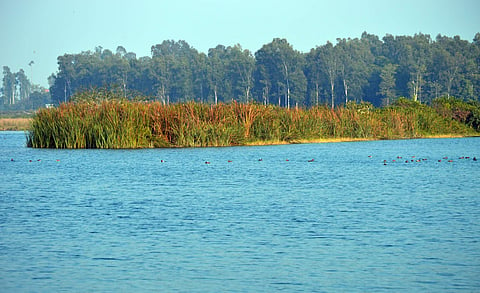

India now has 38 wetlands, the highest in South Asia, with one more added to the list of recognised sites of international importance under the treaty of Ramsar Convention. The Asan Conservation Reserve in Dehradun is the first wetland from Uttarakhand, to be recognised by Ramsar.
The convention, signed in 1971 in the Iranian city of Ramsar, is one of the oldest inter-governmental accord for preserving the ecological character of wetlands. Also known as the Convention on Wetlands, it aims to develop a global network of wetlands for conservation of biological diversity and for sustaining human life.
"Ramsar declares Asan Conservation Reserve as a site of international importance. With this, the number of Ramsar sites in India goes up to 38, the highest in South Asia. This is the first wetland in Uttarakhand to get the Ramsar tag. Asan Conservation Reserve, home to rare species, is a fish spawning ground and has lot of biological diversity," the Ministry of Environment said.
The aim of the Ramsar list is "to develop and maintain an international network of wetlands which are important for the conservation of global biological diversity and sustaining human life through the maintenance of their ecosystem components, processes and benefits.
Wetlands provide a wide range of important resources and ecosystem services such as food, water, fibre, groundwater recharge, water purification, flood moderation, erosion control and climate regulation.
They are, in fact, a major source of water and our main supply of freshwater comes from an array of wetlands which help soak rainfall and recharge groundwater.
In February this year, the government had proposed 10 more sites to be declared as sites of international importance, including the Asan Conservation Reserve. Wetlands declared as Ramsar sites are protected under strict guidelines. If the nine other proposed wetlands are approved by the Ramsar Secretariat, India will have 47 sites protected internationally.
There are over 170 countries party to the Ramsar Convention and over 2,000 designated sites covering over 20 crore hectares have been recognised under it. In January this year, 10 wetlands in India were recognised by the Ramsar Convention as sites of international importance. These are Nandur Madhameshwar in Maharashtra, Keshopur-Miani, Beas Conservation Reserve and Nangal in Punjab, and Nawabganj, Parvati Agra, Saman, Samaspur, Sandi and SarsaiNawar in Uttar Pradesh.
The other Ramsar sites are in Rajasthan, Kerala, Odisha, Madhya Pradesh, Himachal Pradesh, Assam, West Bengal, Jammu and Kashmir, Andhra Pradesh, Manipur, Gujarat, Tamil Nadu, Tripura and Uttar Pradesh.
